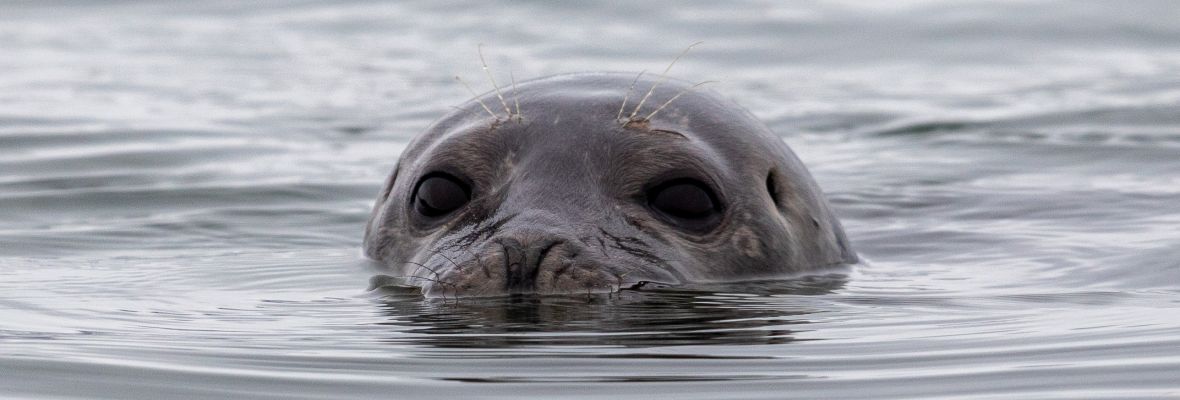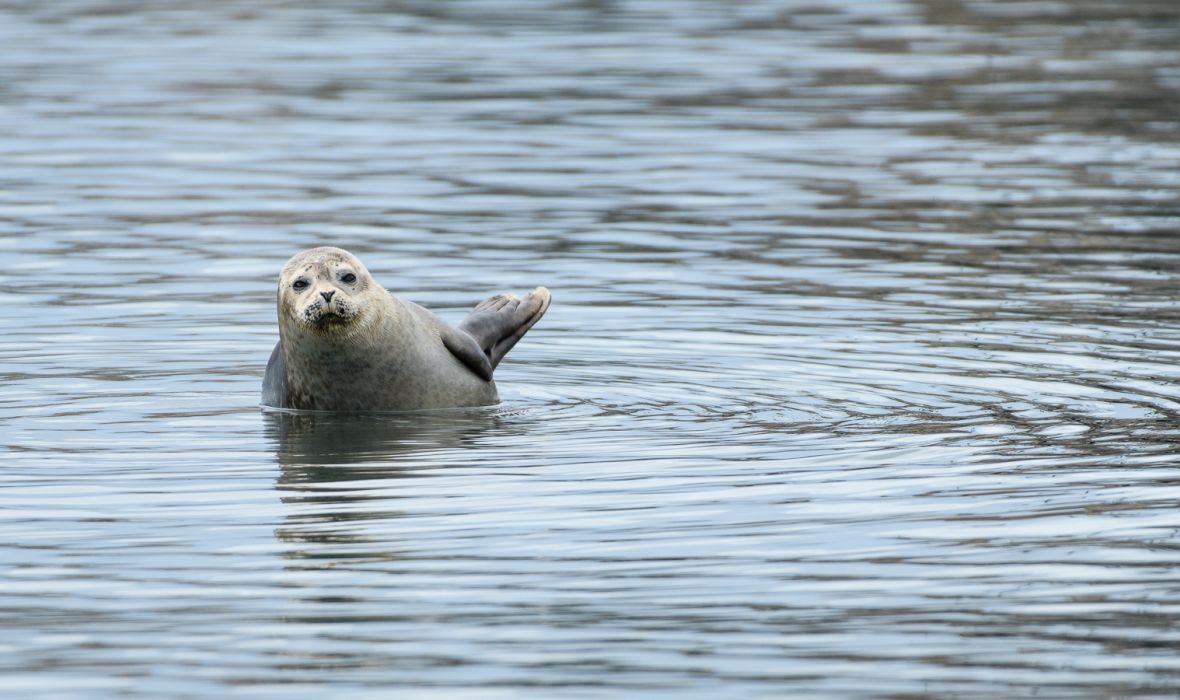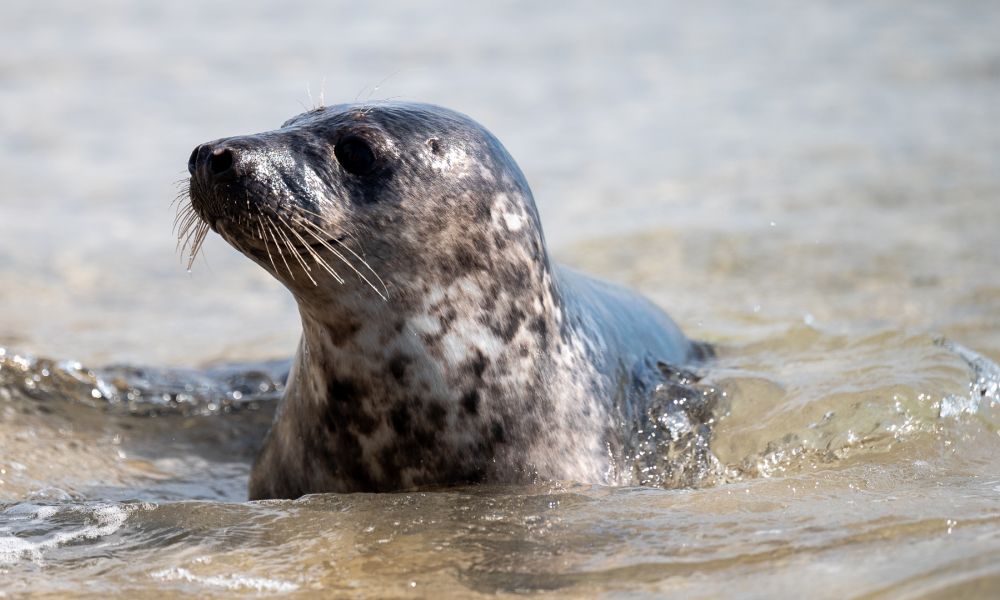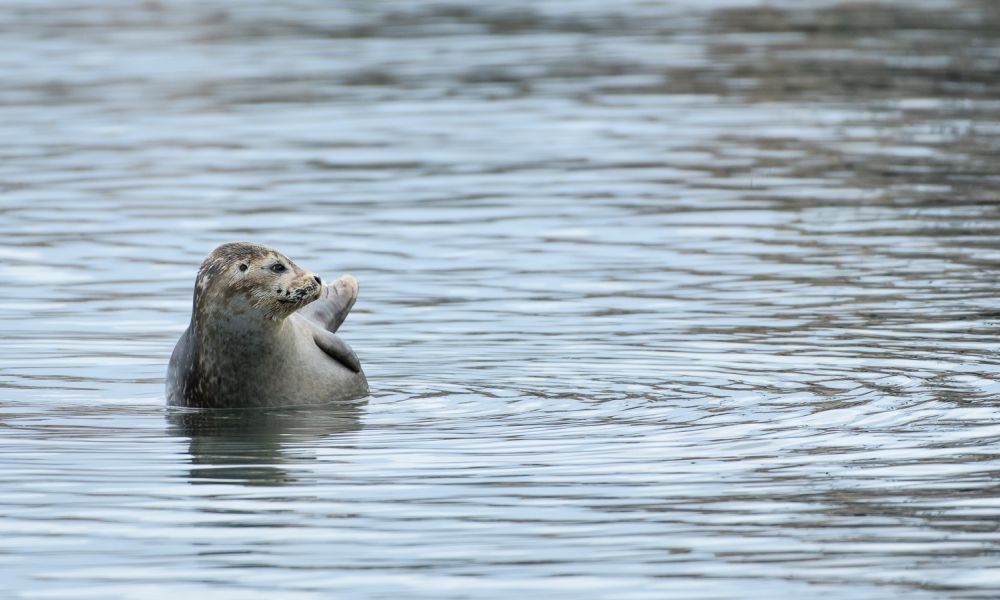How big is a harbor seal?
Harbor seals are medium-sized pinnipeds. Adult males typically measure about 1.5 meters (4.9 feet) and weigh roughly 104 kg (229 lbs), while females are a bit smaller, averaging 1.4 meters (4.6 feet) and 83 kg (183 lbs). Harbor seal pups are born measuring 80–100 cm (2.6–3.3 feet) long and weighing 10–12 kg (22–26 lbs).
What does a harbor seal eat?
Harbor seals generally consume an average of 7 kg of food daily, following a carnivorous (piscivorous) diet that includes fish (cod, herring, and flatfish), squid, crustaceans, and molluscs—their diet shifts according to the availability of local resources. Surprisingly, habor seals excel in hunting underwater, utilising their sensitive whiskers (vibrissae) to detect prey even in low-light conditions, and they typically utilise their back teeth to crush the shells and crustaceans they consume.
What does a harbor seal look like?
Harbor seals have a rounded, streamlined body with a short tail. They feature large, dark eyes, a small, rounded head, and lack external ear flaps, accompanied by short neck snouts. Seals can be found in various fur colours; however, the ones most commonly observed in the wild are silver, light tan, and blue-grey with dark speckles or spots, along with dark fur featuring lighter ring-like markings.
Where does the harbor seal live?
Harbor seal habitats are typically located along the coast, on rocky ledges, sandy shores, estuaries, and intertidal zones in the North Atlantic and North Pacific Oceans. Key locations include Jan Mayen, Iceland, Canada, Svalbard, Greenland, Denmark, France, Norway, England, and Scotland.
How long can a harbor seal stay underwater?
As semi-aquatic mammals, harbour seals can hold their breath for as long as 30 minutes in the ocean's top 100 meters (328 feet). However, their typical dives last about 3 to 10 minutes while they forage for food.
What is the difference between a sea lion and a harbor seal?
The key differences between a harbor seal vs a sea lion include the following:
- Ears: Harbor seals lack visible ear flaps, unlike sea lions.
- Harbor seals crawl on their bellies; sea lions walk using rotating hind flippers.
- Vocalisation: Sea lions bark more; harbor seals are quieter.






